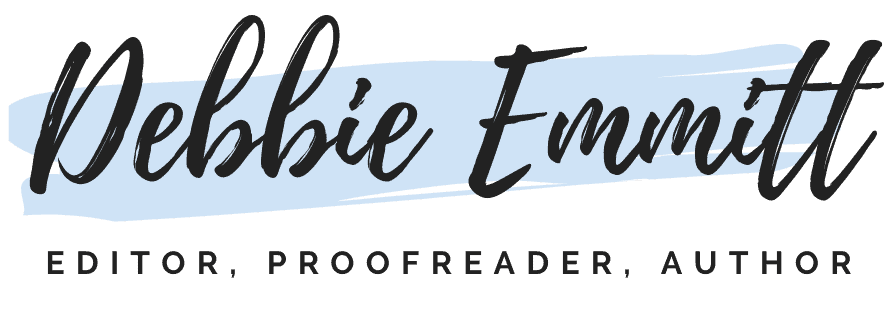
Authors are often told about red flags when hiring an editor, but it’s a two-way street. There are red flags for freelance editors when considering an editing project.
I recently saw a job proposal on a freelancing website that I would not have touched with a bargepole. There were six red flags waving at me. Some of these editing red flags on their own can end up a false alarm, and with a bit of mitigating action, they turn into green flags.
And, of course, authors may be inadvertently waving red flags, not intending to disrespect the editor or undervalue their services. They may just be new to the editing process.
Let’s dive into some red flags for editors and proofreaders to look out for and how you may be able to mitigate them.
🚩 1. Unclear word count
An experienced editor can often be booked up several weeks or months in advance. When an author first enquires about editing services, they may not know the final word count of their manuscript, and that’s absolutely fine.
The red flag comes into play when a potential client is looking for a fixed quote on an estimated word count and won’t budge.
Be aware of the potential for scope creep. The client may assume (consciously or not) that there is a buffer zone of 5,000+ words. Every editor will have a different tolerance for estimated word counts. My buffer zone depends on the total word count.
If an author tells me their manuscript will end up at 90,000 words, but the final tally is 92,000 words, I’m not going to quibble over the difference. However, if it comes in at 95,000 words, I’ll politely suggest a small adjustment to the quote as the project will take at least 3 hours longer, depending on the level of the edit.
If the edit is for a far lower word count, my buffer zone is smaller. For a 10,000-word manuscript, for example, my tolerance is more like 500 words.
✅ Mitigating action
Clarify your word-count buffer with the client ahead of agreeing on a project price.
🚩 2. Claims of an exceptionally clean manuscript
A professional editor’s idea of “clean” will be different from that of someone unfamiliar with the editing process.
We’re all blind to our errors. Even editors hire editors. I’m a professionally trained editor and proofreader, with seven years’ freelance experience and over 100 books under my belt. However, I still hire editors and proofreaders for my books and downloadable resources. And I’m not alone, if my LinkedIn feed is anything to go by.
What’s more, we (editors and writers alike) don’t know what we don’t know. A manuscript may well be free of typos and spelling mistakes, but are there comma splices, mid-scene switches in POV, dangling modifiers and errors of simultaneous action? Most probably.
Beware of potential clients claiming their manuscript doesn’t contain many errors. That may well be the case, but they aren’t the best ones to judge, no matter their level of writing or editing.
✅ Mitigating action
Ask to see an extract of the text before you prepare a quote. Even better, arrange to carry out a sample edit. Don’t be afraid to charge for this if that’s your policy, as it is mine. The cost of this can be taken off the full price of the edit if the client hires you (if you’re happy to do this, as I am). This will give you a good idea of how long the full edit may take.
🚩 3. The job proposal is riddled with errors
This in and of itself isn’t a red flag. After all, that’s why the client is looking for an editor! However, if the potential client is claiming their manuscript is “clean” (see red flag number 2), their error-ridden email could be reflective of the true state of their text.
This will affect the length of time the project will take and, therefore, the price.
✅ Mitigating action
Always ask to see an extract of the text before discussing a quote for the edit or proofread.
🚩 4. The author claims their text just needs a quick check
Sometimes, a potential client will suggest their text will “only take an hour or two” or “just needs a brief check”. If they aren’t familiar with the editing process, they may well believe this, or it may be a ploy to get a cheap quote for a job that ends up far larger.
It is not professional or courteous to tell an experienced editor how long it will take them to edit content. Only they will know the extent of the work involved and their working rate.
✅ Mitigating action
Make sure you see an extract of the text before preparing a quote. Also, explain your process to the client and let them know what the edit involves.
🚩 5. The manuscript has already been edited
There are two things to clarify here:
- Who has already edited the text?
- What is the client’s understanding of the term “edit”?
If the text has already gone through a previous round of professional editing (for example, it may have been line-edited and now needs a copyedit), it will be fairly clean. However, the client may in fact mean their friend has given the manuscript a quick once-over, or the author has self-edited the text.
We editors encourage writers to self-edit, as it can save some time (and therefore a bit of money). It also means we can dig deeper into issues with the text when superficial aspects (typos, for example) have already been taken care of.
However, self-editing is very different from a professional line edit, copyedit, or even a developmental edit. The writer shouldn’t assume they have saved the editor stacks of time and caught most issues.
✅ Mitigating action
Check what levels of editing, if any, have already been done on the manuscript and ask to see an extract before preparing a quote.
🚩 6. An extremely low budget
Editing is expensive, I get that. But there are good reasons why experienced editors with the skills and experience to polish a manuscript charge the rates they do. My blog post about why editing is so expensive explains these reasons in detail. You can rest assured that the hourly rate works out lower than you think.
Freelancing platforms such as Upwork, Fiverr and PeoplePerHour are notorious for being full of low-paid jobs. While this is true, there are also some gems on these platforms. I started out on Upwork when I first went freelance, and I’ve worked on many fantastic projects there for which clients paid a fair rate and valued my expertise.
You will know what you need to charge to have enough money for all your needs. Don’t feel pressured to accept a job for a ridiculously low rate just because the client has plucked a figure out of the air without understanding what they’re paying for.
✅ Mitigating action
If there is clearly no wiggle room whatsoever and the client does not understand or respect the work involved in a professional edit, walk away.
You may decide to take the hit if ALL the following points are true:
- the author has addressed the fact that their budget is far lower than the industry standard and given a valid reason with which you empathise
- the project is a dream manuscript to include in your portfolio
- you can afford to offer a lower rate than usual for the duration of the project and it won’t leave you out of pocket
- there are no other editing red flags
However, do ensure that before you agree to a price, you have seen an extract of the text so you know what the approximate hourly rate will be. Also, explain to the client what your normal rate is and what is included in your service. You never know, they may be prepared to increase their budget if they understand the value of your service.
Another option is to offer a pared-down version of your usual editing service. There are some good ideas about this on Hazel Bird’s website in her Proof Pros article on tackling tight schedules.
In short, go into the project with your eyes fully open.
In summary
Red flags in editing job proposals aren’t always intentional on the part of the author. In most cases, the potential client will not be trying to get something for (next to) nothing or intentionally disrespecting the editor.
However, they are still editing red flags. Seeing an extract of the text before you discuss cost will go a long way to mitigating many of the danger signs I’ve raised above. But some proposals are too full of warning signs to be worth even considering. That is a call only you can make.
I’m grateful to the person who posted that job description riddled with editing red flags because it inspired this blog post. If this article helps just one editor or proofreader avoid a client who doesn’t respect their expertise and refuses to pay a fair rate, then my work here is done.
Mic drop.








How to use social proof to sell more books or attract more clients
You are more likely to sell your book or your services if people see that...